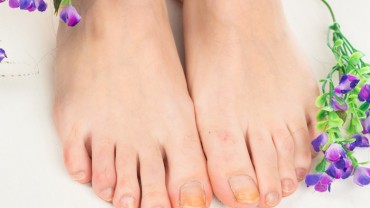15 Natural Remedies for Sore Muscles Relief
Maybe you woke up this morning and experienced that dreaded tightness in your back or neck.
Maybe you worked out yesterday, and your legs are on fire today.
Whatever the reason, you’re thinking to yourself about how to relieve sore muscles now.
If you are experiencing muscle soreness, you might be wondering how to get rid of sore muscles.
It helps to understand what is causing the underlying pain before looking for a remedy.
What Causes Muscle Soreness?
When you work your muscles harder than they are used to, or when you use them in a different way than normal, you cause microscopic damage to the muscle tissue.
Common wisdom blames a build-up of lactic acid, but if that were the case, you’d feel sore much sooner than you do when you work out or strain.
Instead, as you work the muscles, the cells become damaged.
As the cell rebuilds, you experience soreness.
Over time, fluid and white blood cells come to the site of the injury and cells are patched up or replaced.
Almost any kind of hard exercise or change to your normal routine can cause soreness.
Stretching can also cause pain if you go past what your muscles are capable of doing.
Exercises that cause the muscle to contract as it’s lengthening are also notorious for causing soreness.
Soreness is also the result of something happening to the muscle that’s out of the ordinary.
Think of sleeping in a strange position all night.
The muscles aren’t used to the orientation and over the period of a few hours develop soreness.
Trying to avoid activities that cause pain won’t help.
You need to maintain a healthy range of movement to keep your body strong and working properly.
Instead, thinking ahead as you use your body can help manage or prevent pain.
How Can I Prevent Soreness?
Some soreness is a good thing. It shows that your muscles are building and developing after a workout.
However, it’s important to know the difference between healthy soreness and a strained muscle.
If the pain lasts longer than about 72 hours, it’s likely that you’ve strained a muscle.
You can switch up your workouts to avoid putting the strain on any one muscle group.
Varying the types of exercises you do keeps your body in shape and avoids substantial soreness overall.
Eating protein helps your muscles recover more quickly.
Consuming something like whey protein before and after a workout can help reduce the duration of pain.
You can also get regular massages, and make sure your bed has proper support to avoid soreness from stress during sleep or lying for long periods of time.
Same with sitting. You can get up at intervals and stretch to avoid strain.
If you’ve already become sore, there are a few things you can do for sore muscle relief.
Let’s take a look at 15 different home remedies for sore muscles.
Many of the remedies can be combined for maximum effect, so make sure you pay attention to which ones you can do together or in sequence.
If you read the entire list, you might be able to put together your own sequence of remedies to get rid of soreness and take charge of pain.
Sore Muscle Relief
Massage
Massage is a natural muscle relaxer and helps in the recovery process.
If you find yourself particularly sore without doing strenuous workouts, then muscle tightness may be contributing.
If a muscle is tight, your body isn’t able to produce a full range of motion and compensates via other movements.
If those muscles aren’t used to carrying the load, it can lead to soreness.
Massage relaxes muscle groups and releases any tension the muscles might be carrying.
This release leads to less pain overall and reduces the chances that stiffness will cause soreness in other areas.
You can find a massage therapist, or perform massage on yourself.
It’s helpful to have an aid such as a foam roller or other tool if you are massaging sore areas on your own.
If you are doing this yourself, be sure to start slow so that you don’t cause bruising or further strain.
Consume Cherries
Based on a recent study, there’s a compound in cherries that helps the muscles rebuild and withstand greater amounts of stress.
Drinking cherry juice without added sugar for one week leading up to a particularly strenuous activity can reduce soreness significantly.
You can eat one and a half cups of fresh cherries after a workout to help reduce post-workout pain and inflammation.
Fresh cherries contain many antioxidants that help to repair cell damage and improve cell condition.
You can also take cherry supplements.
These contribute to reducing muscle soreness in the two days following pain development.
Cherry juice can also help to reduce strength loss after a workout due to the breakdown and rebuilding of muscle tissue.
Take an Epsom Salt Bath
Epsom salts aren’t just for your grandmother.
Soaking in a bath with them supplies your muscles with magnesium directly through the tissue.
Magnesium absorption helps to relax the muscle and relieve tension.
Unlike other minerals, magnesium can be absorbed directly through the skin.
Soaking in bath supplies the muscles with this needed mineral faster and more efficiently.
It helps the muscles rehydrate and restores the body’s proper pH. Muscles thus heal more quickly.
Part of soreness can be attributed to post-exercise dehydration, so the soak will replenish your body as it heals.
This reduces the wait time for soreness.
Put around one cup of Epsom salts into a running bath, and soak for at least 20 minutes to relieve any existing soreness.
If you have certain conditions such as diabetes, this is not recommended, though a warm bath does help improve circulation with or without the addition of Epsom salts.
Apply Magnesium Oil
Another way to get needed magnesium is by applying a magnesium oil directly to the skin.
If you have a particular sore area, this can be very helpful.
At night when soreness hits, spray the oil directly onto the affected area and drink water.
The magnesium absorbs into the target area, reducing soreness.
For some, the application can sting a bit, but the relief outweighs the initial discomfort.
If you’ve been working out and you know soreness is likely, go ahead and make an application on the target areas before soreness even starts to set in.
This makes it more likely that your recovery time will be quicker.
It also helps the body produce more of the hormone the muscles need to repair and grow stronger, so as you are applying magnesium you are also improving the overall conditioning of the muscle.
Apply Heat Rather than Ice
Traditional wisdom is that ice helps to reduce muscle swelling and therefore overall pain, but recently we’ve discovered that the body will continue with inflammation once the cold source is removed.
This doesn’t do much besides relieving immediate pain due to swelling.
Ice merely numbs the pain, which can be detrimental to muscle healing in the long run.
Ice also has the potential to kill off cells in the middle of the repair.
Instead, applying heat tricks the body into believing that the inflammation is at its peak.
Heat truly reduces the pain by relaxing the muscle and halting any extended inflammation.
Shower heat is good because it’s a natural muscle relaxer.
Also, heating pads can be used for up to 20 minutes at a time, but be careful not to burn the skin around the muscle.
Use the Right Essential Oils
Certain essential oils can also help with muscle soreness if you use the right combination for your particular type of soreness.
If you are experiencing spasms, you can use basil oil, marjoram oil, and Roman chamomile oil.
If you have tension, it’s good to use peppermint, lavender, or helichrysum oil.
For cramps, it’s best to use lemongrass with marjoram or peppermint oil.
You can’t apply essential oils directly to the skin because they are too concentrated and will cause irritation.
Instead, put one or two drops of oil into another carrier oil such as fractionated coconut oil or olive oil.
Then, apply the oil mixture to the affected area.
You can apply the oil anytime you feel soreness in your muscles.
For greater effect follow the application with heat.
You can apply these oils up to three times daily for best results, but if you have sensitive skin be sure to test the oils in a small area to check for adverse skin reactions.
Hot Pepper Rubs
Hot pepper may seem like the last thing you want to rub into your skin, but the main ingredient that gives peppers their kick, capsicum, can do a lot to relieve pain.
It’s been used to relieve soreness from arthritis, joint and muscle pain, and soreness after stress or exercise.
Make your own by mixing 1/4 to 1/2 teaspoon cayenne pepper and one cup of olive oil.
You can also warm coconut oil to room temperature and use that instead.
Rub the affected area well with the oil.
Make sure to wash your hands thoroughly after application and do not get the oil in your mouth or eyes.
Test a small area first to make sure that it isn’t too irritating to your skin.
If it causes more discomfort, stop using this treatment.
If you know you have sensitive skin, make doubly sure to test this remedy on a tiny patch of skin so you’ll know if you have an adverse reaction to the capsicum.
Water
One of the most basic building blocks of the human body is water.
With any extended exercise or strenuous work, we deplete the supply of water in our systems.
Dehydration causes the muscles to tighten and contributes to overall soreness.
Making sure you stay hydrated can help reduce the amount of time that you feel sore after a workout due to dehydration and tightness.
It can also help to lubricate joints and reduce the pain in surrounding muscles as the body recovers from joint inflammation.
It also prevents cramping in the legs, particularly at night. Chronic dehydration reduces muscle elasticity.
Muscle spasms from cramping can extend pain much longer.
Be sure to drink at least half your body weight in water per day to avoid dehydration.
Drink at least 8 oz. of water an hour before exercising so that you begin hydrated, and then sip on water throughout to maintain your body’s hydration levels.
Drink Coffee
Caffeine can help reduce soreness if taken before strenuous exercise.
It works by blocking adenosine, a chemical your body releases in response to muscle stress or injury.
Drinking two cups, or taking a supplement equivalent, produces the best effects.
For many people, this is a simple remedy that they’ve already incorporated into their daily life.
Drinking too much caffeine can have the opposite effect, so make sure you don’t consume too much.
Your body reacts to too much caffeine by spasming, which can exacerbate any soreness you might be feeling already.
It can also cause involuntary spasms in internal musculature, so be very sure that you aren’t getting more than you need.
You can also take in water in other forms such as veggies with high water content and your cherry juice from above.
Although less is known about the response of muscle pain to caffeine, it’s also possible that the caffeine interrupts the brain’s interpretation of pain to some extent.
Foam Rolling
A simple technique to stretch and massage the muscle at the same time is to use a foam roller.
It uses a technique called self-myofascial release to massage the muscle in targeted areas to prevent muscle scarring.
It also helps elongate those muscles and connective tissues for the better range of motion.
Muscle scarring can lead to chronic pain, so if you’ve damaged your muscles, this is a helpful exercise.
Simply find a foam roller and use it against your body weight to roll the muscle.
This lengthens the connective tissues and the muscles themselves for better range of motion.
You can do this a few times a day at home, but start off slowly so that you don’t cause strain accidentally.
Over-rolling or over-extending a muscle can tear the connective tissues and put you right back where you were before.
It’s best to start with a few gentle moves once a day to see how your muscles feel afterward, and work up to more advanced moves.
Ginger
Just as ginger can help with stomach problems causing pain and discomfort, taking ginger can also contribute to reducing muscle pain.
Daily intake of ginger, whether raw or in capsule form, triggers better blood flow and circulation.
This feeds the muscle and helps it to repair much more quickly.
Healthy muscles are also less likely to be strained by unexpected work.
Ginger is an anti-inflammatory, like ibuprofen, and can be applied to the affected muscle as well.
Simply wrap four pieces of ginger in a towel and place in a plastic bag.
Put the bag into hot, not boiling, water for a few minutes until the ginger is warmed.
Let it cool and put it on the affected area for 10 to 15 minutes.
You can also drink ginger tea.
Simply cut a small piece of ginger root and boil it in two cups of water for 10 minutes.
Take the ginger out, add honey, and sip it twice a day.
Apple Cider Vinegar
Apple Cider Vinegar is another anti-inflammatory like ginger that can help increase blood flow and circulation throughout the body.
It is also alkalizing, which aids the body’s natural healing process.
The more alkaline your body, the better able cells are to regenerate and repair themselves.
You can add two cups of apple cider vinegar to a warm bath, and soak for at least 20 minutes.
The heat combined with the apple cider vinegar will relax muscles and relieve tension, while your body benefits from the anti-inflammatory properties.
If you don’t want to bathe, another choice is to take one tablespoon of apple cider vinegar with a warm glass of water.
Just mix with a little honey to taste, and drink once daily for at least a week.
People who regularly do this report better stomach health, as well as fewer muscle cramps overall.
Turmeric
Turmeric is a highly potent painkiller and anti-inflammatory.
Taking Turmeric regularly is a good way to prevent pain in the first place, and to manage existing chronic muscle inflammation.
A calming remedy for pain is to make turmeric milk.
Warm a cup of milk slowly and add a teaspoon of turmeric powder.
Drink it slowly twice a day to help relax muscles and speed healing.
If you don’t like the taste of turmeric, you can also apply it directly to the pained muscle by making a poultice.
Mix equal parts grated turmeric root with lemon juice and a little bit of salt.
Apply the mixture to the affected muscle and cover with a warm, wet cloth.
Leave it on for 30 minutes and then rinse off, preferably in a hot shower so that the steam can further relax the muscle.
Continue with the poultice remedy twice daily, followed by a warm shower until the pain is gone.
Arnica
There are other more well-known pain management herbs, but a lesser-known herb might be equally effective.
Arnica is native to the United States and comes in different kinds of creams and tinctures.
You can massage a tincture into unbroken skin directly over the sore spot.
This is the easiest way to apply it.
You can also make a compress by mixing a tablespoon of arnica tincture into a pint of water.
Gently warm it and dip a cotton cloth into the mixture.
Place it over the pain point or the bruise, and let the compress soak into the area.
Arnica is toxic if it gets into the internal body, so never take arnica by mouth or allow it to penetrate the broken skin.
It is possible to find arnica pills, but the dosage is so small so as to be non-toxic that it’s unlikely to offer relief for any immediate pain.
It’s better to stick to external applications for more efficient pain relief.
Conclusion
Pain is a normal part of life, but knowing how to get rid of soreness can be a game changer.
Learning how to relieve sore muscles as you exercise and build strength is necessary to your body’s physical health.
You can combine different kinds of remedies to manage pain, whether it’s muscle spasms, soreness from exercise or strain, or cramps.
Some of the remedies are perfect to do simultaneously such as heat and water therapies, or essential oils and mineral therapies.
Making sure to maintain muscle strength is also key to managing pain.
Weakness causes the body to compensate, which strains muscle groups and other joints.
A regimen that includes healthy movement will keep the body properly aligned and maintain a good range of motion.
You don’t have to live with pain just because you’ve worked out the muscle.
Think ahead before you do any strenuous exercise or activity in which you might engage muscles you aren’t used to using, and you can stop pain even before it starts.
Do you know how to get rid of sore muscles in other ways?
Let us know in the comments below if you’ve tried our remedies or others, and be sure to share this article with your fellow muscle pain sufferers!
FDA Compliance
The information on this website has not been evaluated by the Food & Drug Administration or any other medical body. We do not aim to diagnose, treat, cure or prevent any illness or disease. Information is shared for educational purposes only. You must consult your doctor before acting on any content on this website, especially if you are pregnant, nursing, taking medication, or have a medical condition.
HOW WOULD YOU RATE THIS ARTICLE?





